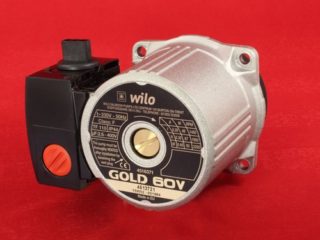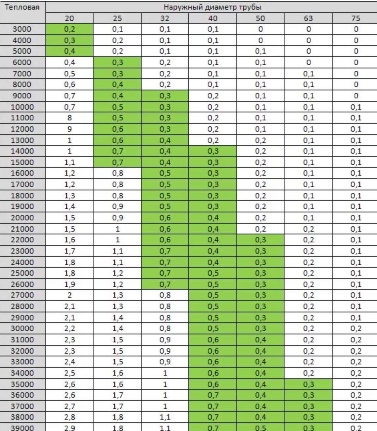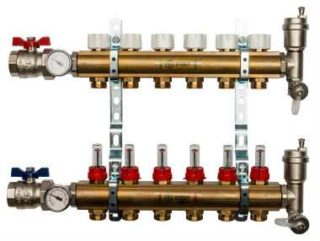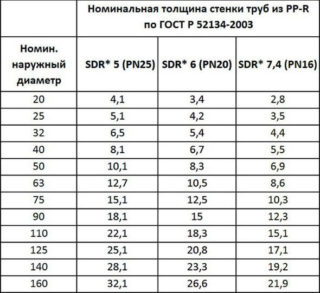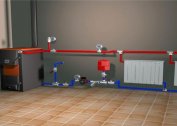The efficiency of the heating main depends on the capacity of the boiler, radiators, and valve parameters. The appropriate diameter of the pipes for heating is determined through online programs or self-calculations, as well as technical indicators and material. Knowing all the nuances, the owner of the house can pick up high-quality and reliable products.
Difficulties in choosing the diameter of the pipeline
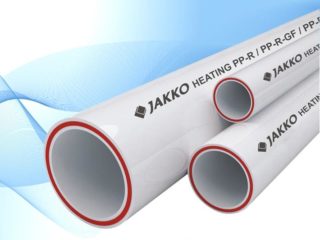
The main difficulty in selecting the diameter lies in the features of the planning of the highway. Considered:
- external indicator (copper and plastic) - the surface of the reinforcement can give off heat fluxes to the room;
- inner diameter (steel and cast iron) - allows you to calculate the throughput characteristics of a single section;
- conditional parameters - rounded value in inches, needed for theoretical calculations.
To determine the cross section, it is taken into account that 100 W of energy is spent on 1 m2 of the room.
Size versus coolant speed
The choice of the diameter indicator will determine the throughput of the highway taking into account the recommended speed of 0.4-0.6 m / s. At the same time, it is taken into account that at a speed of less than 0.2 m / s, air jams are formed, and at a speed of more than 0.7 m / s there is a risk of an increase in the coolant pressure.
How evenly is the thermal energy distributed along the circuit and determines the diameter of the nozzles. The smaller it is, the faster the water moves, but speed indicators have a limitation:
- up to 0.25 m / s - otherwise there are risks of air jams and the impossibility of their removal by vents, heat loss in the room;
- not more than 1.5 m / s - the coolant will make noise during the circulation;
- 0.36-0.7 m / s - the reference value of the velocity of the coolant.
To control the intensity of circulation without increasing the diameter of the nozzles, a circulation pump is used.
Heat carrier volume parameters
For systems with natural circulation, it is better to choose fittings with an increased diameter. This will reduce heat loss during the friction of water on the inner surface. When using this technique, it should be noted that with an increase in the volume of water, the energy costs for heating it increase.
Hydraulic losses
The phenomenon occurs if the pipeline is made of plastic products of different diameters. The reason is the pressure difference at the joints and an increase in hydraulic losses.
Formula for calculating the diameter of the trunk
The correct determination of the diameter of the pipe used for the heating line of an apartment building or private house is made on the basis of the table and formula. When working with the table, you need to focus on the green cells - they indicate the optimal speed of the coolant pressure.
The calculation is made according to the formula D = √ (354 * (0.86 * Q / ∆t) / V)where:
- V- fluid velocity in the pipe (m / s);
- Q- the required amount of heat for heating (kW);
- ∆t- the difference between reverse and direct feed (C);
- D - pipe diameter (mm).
As an example, we can consider a two-story house with four wings (2 per floor), connected to a two-pipe system with a total heat loss of 36 kW, 20 kW of which are for heating the first floor, 16 kW - of the second. Polypropylene was used for communications; they operate in 80/60 mode at a temperature of 10 degrees.
Counting Algorithm:
- The entire volume of water falls on the connection area of the first branch with the boiler. This is the total amount of heat equal to 38 kW.
- From the table you need to find this line and the corresponding green cells. With these parameters, the required diameter is 40 and 50 mm. The choice is made in favor of less.
- The fork shows the amount of heat on the first (20 kW) and second (16 kW) floors. The cross-section of pipe fittings according to the table is 32 mm.
- Since there are 2 wings on each floor, the circuit is divided into two branches. For the first floor, 20/2 = 10 kW per wing, for the second - 16/2 = 8 kW per wing.
- According to the table, the diameter is determined - 25 mm, used until the load drops to 5 kW, then - 20 mm.
Calculations for the return are not needed - pipes with similar parameters are used.
Important pipe specifications
High-quality space heating is not possible without taking into account the technical characteristics of the equipment. They can be considered on the example of standard products from polypropylene brands PN 20 and 30.
| Diameter Outside mm | PN 20 | PN 30 | ||
| Diameter inside | Wall thickness | Diameter inside | Wall thickness | |
| 16 | 10,6 | 2,7 | ||
| 20 | 13,2 | 3,4 | 13,2 | 3,4 |
| 25 | 16,6 | 4,2 | 16,6 | 4,2 |
| 32 | 21,2 | 5,4 | 21,2 | 3 |
| 40 | 26,6 | 6,7 | 26,6 | 3,7 |
When the coolant is at a speed of 0.4 m / s, it is required to take into account the thermal power of products of various diameters. With external parameters of 20 mm, 4.1 kW is generated, at 25 mm - 6.3 kW, at 32 mm - 11.5 kW, at 40 mm - 17 kW.
Calculation procedure for the heating manifold and mounting sleeves
The heating collector is equipped with an apartment or a private house. The device provides the distribution of the coolant in several branches. The calculation of the collector is carried out together with the cross-section of the pipes according to the external or internal size based on the principle of “three diameters” - pipes on the route are removed from each other by 6 radii each. The diameter of the collector is also equal to this value.
The parameters of the sleeves are calculated after establishing the cross section of the line. Elements are selected taking into account the material of the wall and reinforcement, the degree of expansion when heated. For example, the diameter of the pipe made of plastic is 20 mm, the sleeve is 24 mm.
The sequence of calculation of the cross section of heating
For communications with circulation pumps, it will be necessary to take into account the volume of coolant in the system, the total length of the heating main, the reference flow rate, the heat transfer of heating, the power of the equipment, the resistance value and pressure without a pump.
To find out the size of the products, you will need to make an adjustment to reduce the efficiency - the resistance to bends, bends and fittings. The calculations can be carried out according to the formula H = λ (L / D) (V2 / 2g)where:
- N - height of zero pressure without pressure in m;
- λ - pipe resistance coefficient;
- L - length of the trunk;
- D - inner diameter of the pipe in mm;
- V - flow rate in m / s;
- g - acceleration of gravity equal to 9.81 m / s2.
In the process of calculating the minimum heat loss, you need to check several diameter options for minimum resistance.
Characteristics of materials for the manufacture of pipes
Manufacturers produce pipelines from several types of materials.
Polymer
Products for which plastic material is used - cross-linked or ordinary polyethylene. After calculations, you can establish what diameter of propylene pipes is needed for heating a private house, depending on the type of equipment:
- one or two batteries - 16 mm;
- a radiator or a group of radiators with a power of 1-2 kW (standard), up to 5 batteries with a power of up to 7 kW - 20 mm;
- dead end arm (house wing), radiators up to 8 pcs. total power up to 11 kW - for heating it is better to use propylene pipes with a diameter of 25 mm;
- one floor (up to 12 radiators with a total capacity of up to 19 kW) - 32 mm;
- a line of 20 radiators up to 30 kW with a capacity of 40 mm.
The wall thickness of polymer products is selected according to the pressure parameters in the network and is 1.8-3 mm.
Steel
They are distinguished by durability and good heat dissipation, but are difficult in terms of installation.The surface of stainless steel fittings is not subject to corrosion, characterized by smoothness. Steel heating fittings in accordance with GOST 3262-75 are classified according to the outer diameter, on which the wall thickness depends. The data are shown in the table.
| Outside diameter | Wall thickness | ||
| Lungs | Standard | Reinforced | |
| 21,3 | 2,5 | 2,8 | 3,2 |
| 26,8 | 2,5 | 2,8 | 3,2 |
| 33,5 | 2,8 | 3,2 | 4 |
| 42,3 | 2,8 | 3,2 | 4 |
| 48 | 3 | 3,5 | 4 |
Standard and light modifications are used to organize apartment or home heating.
Copper
The material is characterized by good thermal conductivity, corrosion resistance, tensile ability. When the coolant freezes, the system can work while maintaining tightness. Features of the sizes of copper fittings are indicated in the table.
| Diameter mm | Wall thickness mm | Weight m.p., gr |
| 15 | 1,5 | 391 |
| 18 | 2 | 480 |
| 22 | 2 | 590 |
| 28 | 2,5 | 1420 |
| 42 | 3 | 1700 |
To conduct heating, it is worth using copper fittings with walls of 1.5-2 mm.
If there are 5-8 radiators in the apartment and 2-3 forks in a private house, you can independently calculate the diameter of the pipe for the heating main. For this purpose, it is allowed to work with formulas and tables. Organization of a complex system with several levels involves the use of special online programs.
